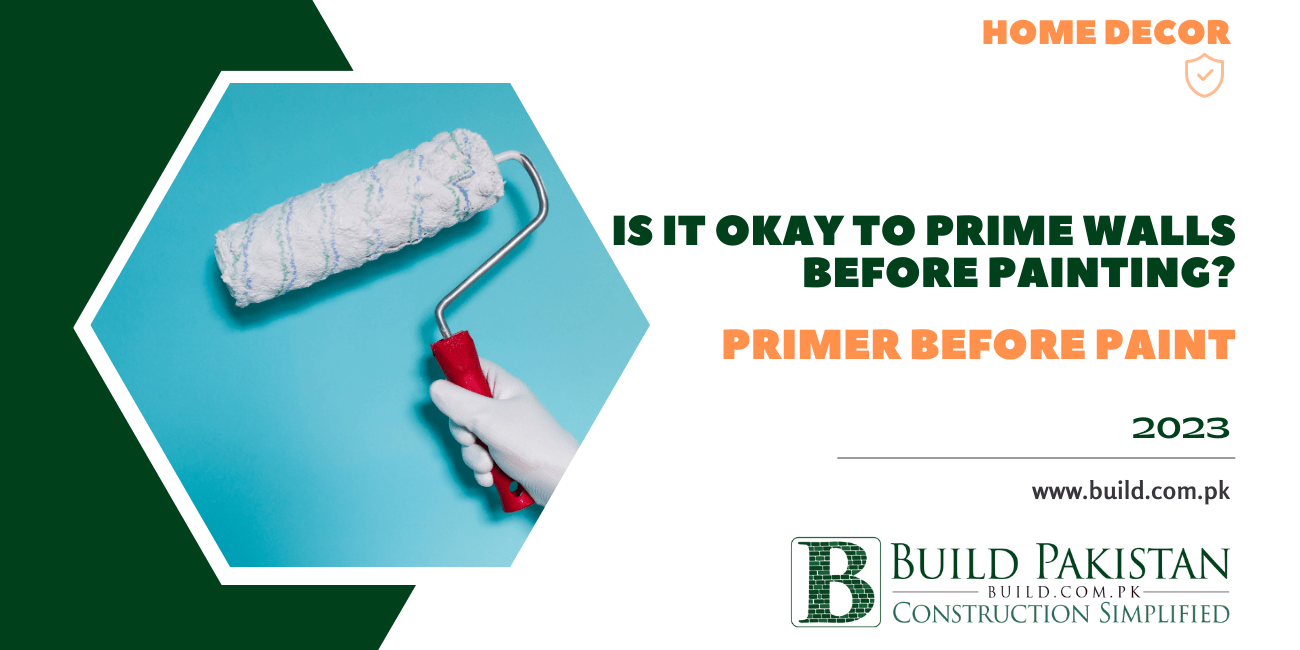Is it okay to prime walls before painting: A brief Information

Is it okay to prime walls before painting?
The extra step of priming your walls before painting may involve more time and work, but it will be well worth it. If you're new to the world of do-it-yourself home repair and want to give the interior of your house a new coat of paint, you might want to spend money on a high-quality primer to make sure your walls appear immaculate and smooth after you're done.
But many people don't realise that priming walls before painting not only gives them a professional-looking finish but also may cut down on the number of applications necessary. Additionally, it helps keep the hue from fading for years while protecting the colour.

THE BEST REASONS TO PRIME YOUR WALLS PRIOR TO COATING
· The purpose of primers is to offer a solid surface on which the colour may be applied. This material's porous porosity and slightly rough surface make it easy for paint to adhere to it.
· To provide a homogeneous finish, it can hide stains and mask other flaws. Without a primer, you might need to apply twice as much paint to get comparable results.
· Since paints are often more expensive than primers, using a primer can dramatically reduce the amount of colour applications, which might be highly cost-effective.
· It eliminates the surface's underlying colour and prevents it from transferring to the new coat, allowing the new colour to stand out.
TYPES OF BASIC PRIMERS YOU SHOULD BE AWARE OF

Hardware stores often carry one of three different types of primers:
Latex Primer: Compared to their oil-based counterparts, these water-based primers for walls are less fragile. Furthermore, unfinished drywall is where they are most frequently employed.
Pigmented Shellac Primer: These are excellent for surfaces that have suffered significant water or smoke damage. The wood paint primers with shellac bases are excellent at covering stubborn stains in solid colours.
PRIMER WHEN TO USE IT ON WALLS
Before taking up a paintbrush, you should think about applying primer to the walls if you experience one or more of these issues.
Supposing the surface is stained
Similar to a base coat, a paint primer hides surface imperfections to provide a clean finish. Using a high-quality primer might extend the life of your paint and keep the surface clear of stains if your walls have any obvious stains or scuffs
IF THE SURFACE IS VERY POPULOUS
Because cement and concrete are naturally porous materials, the majority of interior and exterior walls in Pakistani homes have a very porous surface.
AS LONG AS THE SURFACE IS GLOSSY
Glossy base coatings are difficult to paint because of their finish. As a result, before applying at least two coats of primer, if you had previously painted your walls a glossy colour, you might need to lightly scuff the surface with sandpaper. Your paint won't be able to adhere to the wall if this happens.
It might be a bit challenging to paint over deeper colours with light colours. Therefore, the majority of specialists advise applying at least two coats of white pigmented primer to the surface. By doing this, the lighter colour would shine out after a few layers.
PERMITTED PRIMER SKIP TIMES FOR WALLS

A VERY CLEAN SURFACE IS REQUIRED
If your walls are very clean and in good condition, you might be able to skip the priming. Wiping down the surface with a solution of tri-sodium phosphate and water is the simplest approach to clean it before painting. However, if you are unable to obtain this cleaning agent, you may easily remove dust by wiping it off with a soft microfiber cloth.
IF THE BASE COLOR IS NOT BEING CHANGED
Sometimes all your house needs to brighten up is a fresh coat of paint. You might not even need a primer if all you want to do is freshen up the current shade and have no plans to change your colour scheme. Simply ensure that the surface is dust-free.
SELF-PRIMING PAINTS USE
Last but not least, if you're using self-priming paint, you may skip priming your walls. These paints provide a stronger layer and are often thicker. But in addition, they cost more and take longer to heal. Therefore, employing these two-in-one items won't result in significant time or financial savings.









